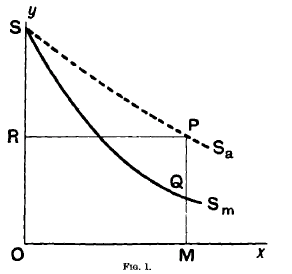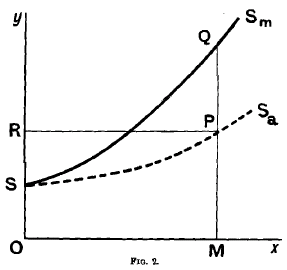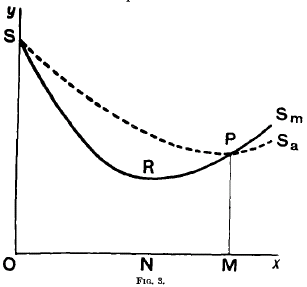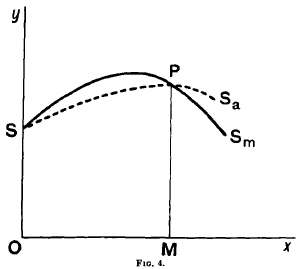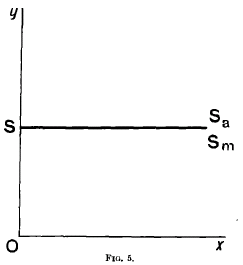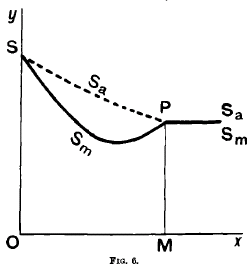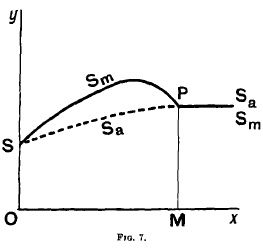The Economics of Welfare
By Arthur C. Pigou
WHEN a man sets out upon any course of inquiry, the object of his search may be either light or fruit—either knowledge for its own sake or knowledge for the sake of good things to which it leads. In various fields of study these two ideals play parts of varying importance. In the appeal made to our interest by nearly all the great modern sciences some stress is laid both upon the light-bearing and upon the fruit-bearing quality, but the proportions of the blend are different in different sciences. At one end of the scale stands the most general science of all, metaphysics, the science of reality. Of the student of that science it is, indeed, true that “he yet may bring some worthy thing for waiting souls to see”; but it must be light alone, it can hardly be fruit that he brings. Most nearly akin to the metaphysician is the student of the ultimate problems of physics. The corpuscular theory of matter is, hitherto, a bearer of light alone. Here, however, the other aspect is present in promise; for speculations about the structure of the atom may lead one day to the discovery of practical means for dissociating matter and for rendering available to human use the overwhelming resources of intra-atomic energy. In the science of biology the fruit-bearing aspect is more prominent. Recent studies upon heredity have, indeed, the highest theoretical interest; but no one can reflect upon that without at the same time reflecting upon the striking practical results to which they have already led in the culture of wheat, and upon the far-reaching, if hesitating, promise that they are beginning to offer for the better culture of mankind. In the sciences whose subject-matter is man as an individual there is the same variation of blending as in the natural sciences proper. In psychology the theoretic interest is dominant—particularly on that side of it which gives data to metaphysics; but psychology is also valued in some measure as a basis for the practical art of education. In human physiology, on the other hand, the theoretic interest, though present, is subordinate, and the science has long been valued mainly as a basis for the art of medicine. Last of all we come to those sciences that deal, not with individual men, but with groups of men; that body of infant sciences which some writers call sociology. Light on the laws that lie behind development in history, even light upon particular facts, has, in the opinion of many, high value for its own sake. But there will, I think, be general agreement that in the sciences of human society, be their appeal as bearers of light never so high, it is the promise of fruit and not of light that chiefly merits our regard. There is a celebrated, if somewhat too strenuous, passage in Macaulay’s Essay on History: “No past event has any intrinsic importance. The knowledge of it is valuable, only as it leads us to form just calculations with regard to the future. A history which does not serve this purpose, though it may be filled with battles, treaties and commotions, is as useless as the series of turnpike tickets collected by Sir Matthew Mite.” That paradox is partly true. If it were not for the hope that a scientific study of men’s social actions may lead, not necessarily directly or immediately, but at some time and in some way, to practical results in social improvement, not a few students of these actions would regard the time devoted to their study as time misspent. That is true of all social sciences, but especially true of economics. For economics “is a study of mankind in the ordinary business of life”; and it is not in the ordinary business of life that mankind is most interesting or inspiring. One who desired knowledge of man apart from the fruits of knowledge would seek it in the history of religious enthusiasm, of martyrdom, or of love; he would not seek it in the market-place. When we elect to watch the play of human motives that are ordinary—that are sometimes mean and dismal and ignoble—our impulse is not the philosopher’s impulse, knowledge for the sake of knowledge, but rather the physiologist’s, knowledge for the healing that knowledge may help to bring. Wonder, Carlyle declared, is the beginning of philosophy. It is not wonder, but rather the social enthusiasm which revolts from the sordidness of mean streets and the joylessness of withered lives, that is the beginning of economic science. Here, if in no other field, Comte’s great phrase holds good: “It is for the heart to suggest our problems; it is for the intellect to solve them…. The only position for which the intellect is primarily adapted is to be the servant of the social sympathies.”… [From the text]
First Pub. Date
1920
Publisher
London: Macmillan and Co.
Pub. Date
1932
Comments
4th edition.
Copyright
The text of this edition is copyright © 1932. This book is available through Transaction Publishers, Inc. Direct all requests for permissions and copyrights to Transaction Publishers, Inc.
- Preface to the Third Edition
- Note to the Fourth Edition
- Part I, Chapter 1
- Part I, Chapter 2
- Part I, Chapter 3
- Part I, Chapter 4
- Part I, Chapter 5
- Part I, Chapter 6
- Part I, Chapter 7
- Part I, Chapter 8
- Part I, Chapter 9
- Part I, Chapter 10
- Part I, Chapter 11
- Part II, Chapter 1
- Part II, Chapter 2
- Part II, Chapter 3
- Part II, Chapter 4
- Part II, Chapter 5
- Part II, Chapter 6
- Part II, Chapter 7
- Part II, Chapter 8
- Part II, Chapter 9
- Part II, Chapter 10
- Part II, Chapter 11
- Part II, Chapter 12
- Part II, Chapter 13
- Part II, Chapter 14
- Part II, Chapter 15
- Part II, Chapter 16
- Part II, Chapter 17
- Part II, Chapter 18
- Part II, Chapter 19
- Part II, Chapter 20
- Part II, Chapter 21
- Part II, Chapter 22
- Part III, Chapter 1
- Part III, Chapter 2
- Part III, Chapter 3
- Part III, Chapter 4
- Part III, Chapter 5
- Part III, Chapter 6
- Part III, Chapter 7
- Part III, Chapter 8
- Part III, Chapter 9
- Part III, Chapter 10
- Part III, Chapter 11
- Part III, Chapter 12
- Part III, Chapter 13
- Part III, Chapter 14
- Part III, Chapter 15
- Part III, Chapter 16
- Part III, Chapter 17
- Part III, Chapter 18
- Part III, Chapter 19
- Part III, Chapter 20
- Part IV, Chapter 1
- Part IV, Chapter 2
- Part IV, Chapter 3
- Part IV, Chapter 4
- Part IV, Chapter 5
- Part IV, Chapter 6
- Part IV, Chapter 7
- Part IV, Chapter 8
- Part IV, Chapter 9
- Part IV, Chapter 10
- Part IV, Chapter 11
- Part IV, Chapter 12
- Part IV, Chapter 13
- Appendix I
- Appendix II
- Appendix III
APPENDIX III
A DIAGRAMMATIC AND MATHEMATICAL TREATMENT OF CERTAIN PROBLEMS OF COMPETITION AND MONOPOLY
THE purpose of this Appendix is to investigate certain matters of pure theory which cannot be handled easily without the help of some sort of technical apparatus.
I
NORMAL SUPPLY PRICE
§ 1. I define the normal supply price of any quantity of output as the price which will just suffice to call out a regular flow of that quantity when the industry under review is fully adapted to producing that quantity and no monopolistic action is undertaken.
Prima facie the supply price of an industry may fall, remain stationary or rise, as the output of the industry increases. According as it does one or other of these things, the industry will be said respectively to obey the law of decreasing, constant or increasing supply price.
*53 The same industry may, of course, obey one of these laws in respect of some quantities of output and another in respect of other quantities. It is proposed to study generally the way in which the relation between variations in normal supply price and the variations in quantity of output is determined.
§ 2. Most industries are made up of a number of firms, of which at any moment some are expanding, while others are declining. Marshall, it will be remembered, likens them to trees in a forest. Thus, even when the conditions of demand are constant and the output of an industry as a whole is correspondingly constant, the output of many individual firms will not be constant. The industry as a whole will be in a state of equilibrium; the tendencies to expand and contract on the part of the individual firms will cancel out; but it is certain that many individual firms
will not themselves be in equilibrium and possible that none will be. When conditions of demand have changed and the necessary adjustments have been made, the industry as a whole will, we may suppose, once more be in equilibrium, with a different output and, perhaps, a different normal supply price; but, again, many, perhaps all, the firms contained in it, though their tendencies to expand and contract must cancel one another, will, as individuals, be out of equilibrium. This is evidently a state of things the direct study of which would be highly complicated. Fortunately, however, there is a way round. Since, when the output of an industry as a whole is adjusted to any given state of demand, the tendencies to expansion and contraction on the part of individual firms cancel out, they may properly be regarded as
irrelevant so far as the supply schedule of the industry as a whole is concerned. When the conditions of demand change, the output and the supply price of the industry as a whole must change in exactly the same way as they would do if, both in the original and in the new state of demand, all the firms contained in it were individually in equilibrium. This fact gives warrant for the conception of what I shall call the
equilibrium firm. It implies that there
can exist some one firm, which, whenever the industry as a whole is in equilibrium, in the sense that it is producing a regular output
y in response to a normal supply price
p, will itself also individually be in equilibrium with a regular output
x
r.*54 The conditions of the
industry are compatible with the existence of such a firm; and the implications about these conditions, which, whether it in fact exists or not, would hold good if it did exist, must be valid. For the purpose of studying these conditions, therefore, it is legitimate to speak of it as actually existing. For any given output, then, of the industry as a whole, the supply price of the industry as a whole, must be equal to the price which, with the then output of the industry as a whole, leaves the equilibrium firm in equilibrium. The industry, therefore, conforms to the law of increasing, constant or decreasing supply price according as the price which leaves the equilibrium firm in equilibrium increases, remains constant or decreases with increases in the regular rate of output—we are not here concerned with short-period fluctuations—of the industry as a whole. In industries which consist, not of many firms but of one firm only, the industry as a whole and the equilibrium firm are, of course, identical, and there are no firms other than the equilibrium firm. In what follows we are concerned (1) with industries in which the outputs of the individual firms are small relatively to the output of the whole industry, which implies that
x
r, the output of our equilibrium firm, is small relatively to
y; (2) with industries consisting of one firm only. The difficult intermediate case of an industry in which
x
r is neither small relatively to
y nor yet equal to
y—a case involving some measure of indeterminateness—will be left out of account. It is assumed throughout that outsiders are not excluded from the industry under review by legal rules or clubbing devices.
II
MANY-FIRM INDUSTRIES
§ 3. Marshall’s discussion of internal and external economies has made familiar in a general way the idea that the long-period production costs of an individual firm in a many-firm industry sometimes depend, not on the size of its own output only, but also on that of the industry as a whole. This idea needs, however, to be set out in precise form. Three stages may be distinguished. In the simplest stage the individual firm’s costs depend solely upon its own output. There are no external economies or diseconomies, and such internal economies or diseconomies as there are are wholly unaffected by variations in the scale of the industry as a whole. If we write
y for the output of the industry as a whole
and
x
r for the output of the equilibrium firm, the money costs of the equilibrium firm are measured by F
r(
xr). In the next stage the individual firm’s money costs consist of two parts, one depending on the size of its own output, the other on that of the output of the whole industry. We may call the former, if we will, internal costs, the latter external costs. The latter will consist of the firm’s expenditure on the materials, machinery and so on which it buys, and the price of which will vary with variations in the demand for them on the part of the industry as a whole. Here the money costs of the equilibrium firm are measured by
 . In the third stage the relation between costs and the individual and collective outputs are more complex. It is no longer proper to regard the individual firm’s money costs as consisting of two separate and independent parts. These costs will undergo different variations in consequence of a given change in its output according to the level at which the output of the industry as a whole stands; and they will undergo different variations in consequence of a given change in the output of the industry as a whole according to the level at which the individual firm’s own output stands. The costs of the equilibrium firm are measured by F
. In the third stage the relation between costs and the individual and collective outputs are more complex. It is no longer proper to regard the individual firm’s money costs as consisting of two separate and independent parts. These costs will undergo different variations in consequence of a given change in its output according to the level at which the output of the industry as a whole stands; and they will undergo different variations in consequence of a given change in the output of the industry as a whole according to the level at which the individual firm’s own output stands. The costs of the equilibrium firm are measured by F
r(
x
r,y). This last formula, which is a general one, of course includes the two simpler formulae as special cases. It will, therefore, be convenient in the first instance to conduct our analysis by means of it.
§ 4. Let
y be the output of an industry as a whole;
x
r the output of the equilibrium firm; F
r(
x
r,y) the total costs of the equilibrium firm; and
p the supply price of the industry’s product. The following quantities have then to be distinguished.
First, the
marginal additive cost to the equilibrium firm,
i.e. the difference made to the total cost of that firm by increasing its output from
x
r to (
x
r + Δ
x
r), the output of the other firms remaining unchanged, =
 .
.
Secondly, the
marginal substitute cost to the equilibrium firm,
i.e. the difference made to the total cost of that firm by increasing its output from
x
r to (
x
r + Δ
x
r), the output of the industry as a whole remaining unchanged (
i.e. that firm’s increase being balanced by an equal decrease elsewhere),

Thirdly, the average cost to the equilibrium firm

§ 5. When a firm is considering what difference will be made to its total costs by adding to or substracting from its output a small increment, it will measure the difference by marginal additive cost if it reckons that the output of other firms will not be altered in consequence of its action, and by marginal substitute cost if it reckons that other firms will be driven by its expansion to contract their output correspondingly, so that the output of the whole industry, including itself, will be unaltered. It may reckon that something intermediate between these two things will happen, in which case it will look to something intermediate between marginal additive cost and marginal substitute cost. If the total cost to any one firm producing a given output is the same, whatever quantity other firms are producing, these two sorts of marginal cost coincide. In any event, so long as the output of the industry as a whole is large relatively to the output of any one firm, they are not likely to differ very much. The technique of the discussion will be slightly different according as we suppose that the equilibrium firm reckons that a small increase in its output would involve an equal, nil or intermediate addition to the output of the industry as a whole, but no difference will be made to the broad result. Since, therefore, the analysis is simplest if the equilibrium firm thinks of small changes in its output as involving equal and opposite changes in the output of its competitors, I shall proceed on the assumption that it in fact does this. Hence, so long as we are considering many-firm industries, no further reference will be made to marginal additive cost; and the term marginal cost will be used without adjective to signify marginal substitute cost, namely,

§ 6. It is then easy to see that, if the supply price of the industry were less than the marginal cost of the equilibrium firm, sales at the supply price would involve a loss to it and it would tend to contract. If the supply price were greater than the marginal cost to the equilibrium firm, that firm would gain by expanding at the expense of other firms, because, while the cost of its old output would still be covered by the selling price—which would be unchanged, since aggregate output is unchanged—the cost of its new output would be more than covered.
*55 Hence in neither case would the equilibrium firm be in equilibrium. Since then,
ex hypothesi, it must be in equilibrium, the supply price of the
industry must be equal to the marginal cost of the equilibrium firm. That is,

§ 7. If the supply price were less than the average cost of the equilibrium firm, it is obvious that that firm would be making a loss and, therefore, would tend to contract, thus belying its nature as an equilibrium firm. Therefore, the supply price cannot be less than the average cost of the equilibrium firm. Again, if the supply price is greater than the average cost of the equilibrium firm, outsiders will be tempted to come into the industry, forming themselves into similar firms and thus increasing the producing capacity of the industry, until the supply price of an output
y is no longer in excess of the average costs of the equilibrium firm. Therefore the supply price cannot be greater than the average costs of the equilibrium firm. Hence the supply price is equal to the average costs of the equilibrium firm,
*56i.e.

§ 8. Expressed in words, this condition and the preceding condition together state that the normal supply price of the product of a many-firm industry is, in respect of all quantities of output, equal both to the marginal cost and to the average cost of the equilibrium firm; cost being understood, of course, in the sense of money cost. These two conditions are fundamental and of general application. The resultant equality

can also be derived directly from the proposition that, when
y is given,
x
r must be such as to make
 a minimum. To obviate a possible misunderstanding, it may be added that, since
a minimum. To obviate a possible misunderstanding, it may be added that, since
x
r is an implicit function of
y, the supply function of the industry as a whole can, if desired, be expressed as a function of one variable, and is, therefore, capable of being represented by a plane diagram.
§ 9. There are three sorts of equilibrium—unstable equilibrium, neutral equilibrium, and stable equilibrium. A system is in stable equilibrium if, when any small disturbance takes place, forces come into play to re-establish the initial position; it is in neutral equilibrium if, when such a disturbance takes place, no re-establishing forces, but also no further disturbing forces, are
evoked, so that the system remains at rest in the position to which it has been moved; it is in unstable equilibrium if the small disturbance calls out further disturbing forces which act in a cumulative manner to drive the system away from its initial position. A ship with a heavy keel is in stable equilibrium; an egg lying on its side in neutral equilibrium; an egg poised on one of its ends in unstable equilibrium. Obviously for practical purposes unstable equilibrium is no equilibrium at all: its presence would involve the system running down to one in which the industry consists of a single firm. In order that the equilibrium may be neutral, we require the further condition that
 is constant over a certain range: in order that it may be stable, the further condition that
is constant over a certain range: in order that it may be stable, the further condition that

§ 10. Let us now consider in turn the three cases distinguished in § 3. In the simplest of these, where the costs of the equilibrium firm are dependent only on its own output and not at all on the output of the industry as a whole, the expression F
r(
x
r,y) degrades to F
r(
x
r). The two conditions of equilibrium become

and the condition that the equilibrium shall be neutral or stable becomes

In a many-firm industry condition (3) in conjunction with condition (1) rules out the law of decreasing supply price in respect of outputs equal to or greater than what is being actually sold. For, if that law holds for the industry as a whole, it must hold for some individual firm belonging to it, and such a firm, once getting an accidental start, would cumulatively undersell and oust all the others. Condition (3) is not, however, really necessary to exclude the law of decreasing supply price. For conditions (1) and (2) in conjunction exclude both this law and also the law of increasing supply price. This is easily proved. The two conditions together yield

This implies that
x
r, and consequently F
r‘(
x
r), are determined independently of the output of the industry as a whole; and this implies in turn that the supply price of the industry is the same whatever the magnitude of its output. In other words, the industry is necessarily conducted in accordance with the law of constant supply price.
§ 11. In this simple case, since the cost function of the equilibrium firm can be—as of course it cannot in the more complex cases—represented by a plane diagram which is valid and the same whatever the output of the industry as a whole, it may be of service to persons who prefer diagrams to algebra to set out the implications of the foregoing analysis by these means.
In the annexed figures the curve SS
m represents the marginal costs that various amounts of output involve to the equilibrium firm, and the curve SS
a the average costs. These two curves are, of course, bound together by a rigid relation; such that, if M be any
point on O
x and a perpendicular be drawn through M cutting SS
m in Q and SS
a in P, the area SQMO is equal to the rectangle RPMO, whatever be the shapes of the two curves.
It is easy to see that, if either curve slopes downward throughout (as in Fig. 1), the other must also do this; and, if either slopes upward throughout (as in Fig. 2), so also must the other. If SS
m slopes downward at first, then turns upward and thereafter continues to rise, the curve SS
a will continue to slope downward until the point at which the now upward moving SS
m intersects it, and will then
itself turn upward. This case is represented by Fig. 3. If SS
m slopes upward at first, then turns downward and thereafter continues to fall, SS
a will, in like manner, slope upward until SS
m intersects it, and will then itself turn downward. This case is represented in Fig 4.
Finally, if, either initially or after a point of intersection between the two curves, either of them henceforward moves horizontally, the other must coincide with it and do the same. This case is represented in Figs. 5, 6 and 7.
*57
The
conditions of equilibrium for the equilibrium firm, set out in the preceding section, imply that it is producing such a quantity of output OM that an ordinate drawn perpendicular to OM cuts the curves SS
m and SS
a at the same point. Hence in the conditions represented in Figs. 1 and 2 no equilibrium of any sort is possible. In those represented by Fig. 4 there is a single point of unstable equilibrium: in those represented by Figs. 5 to 7 there are ranges of neutral equilibria: and in those represented by Fig. 3 there is a single point of stable equilibrium; the point, namely, at which internal economies have reached their limit, in such wise that the average cost of production is at a minimum. Unstable equilibrium is, as we have seen, for practical purposes impossible. If neutral equilibrium prevails, changes in the output of the equilibrium firm may take place, but cannot be caused by associated changes in the output of the industry as a whole. If stable equilibrium prevails, the output of the equilibrium firm cannot change. It is fixed rigidly, and changes in the output of the industry as a whole can only come about through an alteration either in the number of firms employed or in the magnitude of the non-equilibrium firms. In any event, whether neutral or stable equilibrium prevails, the average (and marginal) cost of the equilibrium firm, and so the supply price of the industry, is the same for all outputs of the industry:
i.e. the industry conforms to conditions of constant supply price.
§ 12. In the second class of case distinguished in § 3 the formula for the costs incurred by the equilibrium firm degrades to

The two conditions of equilibrium become

and the condition that the equilibrium shall be neutral or stable becomes, as before,

As in the previous case, conditions (1) and (2) yield
 So far, therefore, as the internal position and what we may term the internal costs of the equilibrium firm are concerned, everything is exactly the same as it was in that case. Internal costs per unit of product are determined at a fixed level independent of the output of the industry as a whole, and the size of the equilibrium firm is also independent of that output. In this case, however, these results do not imply that the industry as a whole must conform to the law of constant supply price. For, though
So far, therefore, as the internal position and what we may term the internal costs of the equilibrium firm are concerned, everything is exactly the same as it was in that case. Internal costs per unit of product are determined at a fixed level independent of the output of the industry as a whole, and the size of the equilibrium firm is also independent of that output. In this case, however, these results do not imply that the industry as a whole must conform to the law of constant supply price. For, though
 is fixed independently of
is fixed independently of
y, the element
 , and, therefore,
, and, therefore,

are, so far as the present argument goes, free to vary up or down as
y varies. Thus, if a growth in the output of the cotton industry led to a rise in the price of its material, raw cotton, the cotton industry as a whole would conform to the law of increasing supply price; if its expansion led to a fall in the price of raw cotton, to the law of decreasing supply price. To determine whether in fact the price of materials, machinery and so on supplied to an industry by others will rise, fall or remain constant when the output of that industry increases, we should need to step outside the industry primarily under review and investigate the conditions of production in the others.
§ 13. In the third and most general case distinguished in § 3 it is obvious that the three governing conditions impose no restrictions on the relations that may subsist between variations in the supply price and in output. It is still true that, for any given output of the industry as a whole, the output of the equilibrium firm must be such as to make its marginal costs and its average costs equal. But, as the output of the industry as a whole varies, both the output of the equilibrium firm which will make these two things equal and also their magnitude when they are equal may vary indefinitely in either direction. Even,
therefore, if the prices of the materials and machinery bought from outside do not vary with variations in the scale of our industry, its own supply price may vary. Many-firm industries of the generalised type are thus perfectly free to conform to the law of increasing supply price, constant supply price, or decreasing supply price, or to any combination of these laws in respect of different quantities of output. Fig. 3 on p. 797 still correctly represents the conditions of supply in the equilibrium firm
when the aggregate demand is such that OM
units are being purchased from that firm at a price PM
per unit. But now, when the aggregate demand alters, the curves SS
m and SS
a alter also. They move upwards or downwards, or they change their shape, or they do both these things. After the change, as before, equilibrium is only attained when the selling price is equal to both the average cost and the marginal cost of the equilibrium firm. The output of that firm is still measured by OM, where M is the base of a perpendicular drawn from the point of intersection of SS
m and SS
a; but, nevertheless, both the selling price and the output of the equilibrium firm may be different from what they were before the change.
III
ONE-FIRM INDUSTRIES
§ 14. Let us now revert to the laws of supply price in relation to an industry of one firm only. Here the equilibrium firm and the industry as a whole become identical, so that there is no need to employ a function of two variables. Moreover, marginal cost is no longer ambiguous: it must signify marginal additive cost, since there is no such thing as marginal substitute cost. If we were to follow blindly the lead of the preceding discussion, we should conclude that equilibrium requires that

This would mean that there can only be a supply price in respect of one, or, if the curves of marginal cost and of average cost cross one another several times, in respect of a few isolated quantities of output, unless the industry conforms to conditions of constant supply price. Only then, it would seem, is the existence of a continuous supply schedule of the ordinary type possible. It is not difficult to see, however, that the foundation of this argument is unsound. For the equilibrium firm of a many-firm industry it is true that equilibrium is only attainable if both its average cost and its marginal cost are equal to the supply price of the industry. But for the equilibrium firm of a one-firm industry that is not true.
There can, indeed, be no equilibrium if the average cost is greater than the supply price and the industry is selling at the supply price; for, in such conditions, there will be a tendency to contraction. Likewise there can be no equilibrium if the marginal cost is greater than the supply price and the industry is selling at the supply price; for here, again, there will be a tendency to contraction. But, since we have to do with one firm only, equilibrium does not necessarily forbid average cost to be
less than the supply price.
*58 Again, if, where average cost is equal to the supply price, marginal cost is less than this, and the industry is selling at the supply price, there is no tendency for output to expand, since any expansion would necessarily involve a loss, and, therefore, equilibrium is not incompatible with this arrangement.
*59 Hence we conclude that in a one-firm industry the supply price of any given quantity of output is equal to average cost or to marginal cost, according as the one or the other of these is the greater. So far as formal considerations go, the industry is free to conform to decreasing, constant or increasing (money) supply price. If it conforms to decreasing supply price throughout, the supply curve is coincident with the curve of average cost: if it conforms to increasing supply price throughout, with the curve of marginal cost: if it conforms to constant supply price throughout, with both these curves. If it conforms to conditions of increasing supply price in respect of some outputs, and of decreasing supply price in respect of other outputs, the supply curve lies along the curve of average cost where this is higher than the curve of marginal cost, and along the curve of marginal cost where that is the higher of the two.
IV
THE IDEAL OUTPUT IN A MANY-FIRM INDUSTRY
§ 15. I call the output in any industry which maximises the national dividend, and, apart from the differences in the marginal utility of money to different people, also maximises satisfaction, the ideal output. As was shown in Chapter XI. of Part II. this output is attained—the possibility of multiple maximum positions
being ignored—when the value of the marginal social net product of each sort of resource invested in the industry under review is equal to the value of the marginal social net product of resources in industries in general, or, more strictly, in the central archetypal industry of Part II. Chapter XI. § 1. In this central archetypal industry each sort of productive resource will have a value in money per unit equal to the value of the net product of a marginal unit of it. Hence the ideal output in our particular industry will be that output which makes the demand price of the output equal to the money value of the resources engaged in producing a marginal unit of output; in other words, it will be
the output that makes demand price and marginal supply price
to the community equal.
§ 16. Let the quantities of the several domestically owned ingredients (including, of course, factors of production), which are required, directly or through things made by them, to produce an output
x
r in the equilibrium firm of an industry, whose total output is
y, be respectively
a, b, c, and the prices
p1,
p2,
p3. Let the quantity of foreign owned ingredient (
e.g. imported machinery or raw material) be
q and its price
p
q. We may then, in a many-firm industry, distinguish the following quantities:
First,
the supply price equals
 (1)
(1)Secondly,
the marginal supply price to the industry, i.e. the difference made to the total money expenses of the industry by adding a small increment of output,
 (2)
(2)Thirdly, the
marginal supply price to the community, i.e. the difference made to the total money expenses of the community by adding a small increment of output,
 (3)
(3)Fourthly,
the rate of change from the standpoint of the industry in the supply price as output increases
 (4)
(4)Fifthly,
the rate of change from the standpoint of the community in the supply price as output increases
 (5)
(5)This last expression is derived from the preceding one by eliminating the elements that represent increments of transfer between the equilibrium firm in our industry and domestic owners of the ingredients it employs.
§ 17. The foregoing expression (4) multiplied by
y measures the excess of expression (2) over expression (1); and the expression (5) multiplied by
y measures the excess of expression (3) over expression (1). Hence:
(1) In all industries where the rate of change from the standpoint of the industry in the supply price, as output increases, is positive (
i.e. where conditions of increasing supply price
simpliciter prevail), the supply price is less than the marginal supply price to the industry: in the converse case it is greater.
(2) In all industries where the rate of change from the standpoint of the community of the supply price is positive (
i.e. where conditions of increasing supply price from the standpoint of the community prevail) the supply price is less than the marginal supply price to the community: in the converse case it is greater.
§ 18. It was shown in § 10 of Part II. Chapter XI. that the expression

is unlikely to be negative: and in § 7 of the same chapter that the expression

is extremely unlikely to be positive. We may take it that, though exceptions are possible, both these inequalities hold good
in general. On the other hand, the expression

may be positive if
 is positive: and, of course, the expression for the rate of change from the standpoint of the industry in the supply price may be either positive or negative.
is positive: and, of course, the expression for the rate of change from the standpoint of the industry in the supply price may be either positive or negative.
Hence:
(1) In general the rate of change from the standpoint of the industry in the supply price, as output increases, is greater than or equal to the rate of change from the standpoint of the community in the supply price. Hence decreasing supply price (
simpliciter)
implies decreasing supply price from the standpoint of the community: but increasing supply price (
simpliciter) does not imply increasing supply price from the standpoint of the community.
(2) In general, except in industries that make use of imported materials of increasing supply price, the rate of change in supply price from the standpoint of the community, as output increases, is nil or negative, and the supply price is equal to or greater than the marginal supply price to the community.
(3) In the generality of industries the marginal supply price to the industry is equal to or greater than the marginal supply price to the community.
§ 19. The ideal output is attained, as was stated above, when the marginal supply price to the community is equal to the demand price.
The output proper to simple competition is attained when the supply price is equal to the demand price.
The output proper to discriminating monopoly of the first degree is attained when the marginal supply price to the industry is equal to the demand price.
The following inferences hold good in general (
i.e. when the inequalities set out in § 18 are valid):
(1) Except in industries that make use of imported materials of increasing supply price, the output proper to simple competition is equal to or less than the ideal output.
(2) In any industry the output proper to discriminating monopoly of the first degree is less than the ideal output if the marginal supply price to the community and the marginal supply price to the industry differ,
i.e. if the rate of change from the standpoint of the industry in the supply price and the rate of change from the standpoint of the community in the supply price differ: it is equal to the ideal output if they coincide.
(3) The output proper to simple competition is less or greater than the output proper to discriminating monopoly of the first degree according as the industry conforms to conditions of decreasing or increasing supply price
simpliciter.
(4) When decreasing supply price
simpliciter prevails, the output proper to simple competition falls short of the ideal output by more than the output proper to discriminating monopoly of the first degree falls short of it. But, when increasing supply price (
simpliciter) prevails, the output proper to simple competition, while greater than the output proper to discriminating monopoly of the first degree, may be either greater or less than the ideal output. In the former case the national dividend fares better than it would do under discriminating monopoly: in the latter it may fare better or may fare worse.
§ 20. The analysis of head (4) in the preceding paragraph may be illustrated thus. Suppose that wheat-growing conforms to the law of constant supply price from the standpoint of the community, but to that of increasing supply price from that of the industry (
i.e. simpliciter), because, and only because, the price of land is raised when more of it is wanted for wheat-growing. In this case the supply price is equal to the marginal supply price to the community, and the output proper to simple competition is identical with the ideal output. But, if wheat farmers,
who are supposed to hire their land from landlords, combine and exercise discriminating monopoly of the first degree, they will cut down their wheat-growing, because, by so doing, they will cause the rent per acre that they have to pay to fall. Their output will then be less than the ideal output, instead of being, as it was before, equal to it. If wheat farmers own their land, and do not hire it, the distinction between the interests of the industry and of the community disappears; and the output of wheat will be the same under discriminating monopoly of the first degree as under simple competition,
i.e. equal to the ideal output.
V
THE IDEAL OUTPUT IN A ONE-FIRM INDUSTRY
§ 21. In a one-firm industry when
 and the supply price of an output
and the supply price of an output
y is, therefore,
 the analysis of the preceding discussion is applicable, the formal expression of it needing to be modified only so far as to provide for the identity of
the analysis of the preceding discussion is applicable, the formal expression of it needing to be modified only so far as to provide for the identity of
xr and
y. In a one-firm industry, in which marginal cost exceeds average cost, something different is needed. The marginal supply price to the industry and the supply price are both equal to F'(
y). Therefore, if no transfer elements are involved, so that the marginal supply price to the industry is equal to the marginal supply price to the community, and output equating supply price and demand price—which, in this case, is the output proper alike to simple competition and to discriminating monopoly of the first degree—will be equal to the ideal output, in spite of the fact that the industry conforms to the law of increasing supply price. This case in general can only occur when imported ingredients of increasing supply price are being used. If transfer elements are involved, an output which equates supply price and demand price will be less than the ideal output.
*60
VI
DEMAND PRICE AND MARGINAL DEMAND PRICE
§ 22. In the preceding discussion it has been tacitly assumed that the demand curve is also what may be called, by analogy with supply, a curve of marginal demand prices. This is not necessarily so. The marginal demand price of a quantity
y of any commodity is the difference between the desiredness (as measured in money) to consumers in the aggregate of annual (or weekly) purchases of a quantity
y and of a quantity (
y + Δ
y) respectively. The demand price of
y units is the price that maintains an annual (or weekly) purchase of a quantity
y. Hence it is equal to the desiredness (as measured in money) of the least desired increment (Δ
y) in a quantity
y to the purchaser of that increment. If then the purchase of the marginal unit indirectly increases or diminishes the desiredness of their holdings to the purchasers of other units, the marginal demand price and the demand price will be different. For commodities the desire for which is partly a desire for the uncommon the curve of marginal demand prices, which, for a nil purchase, coincides with the demand curve, will fall further and further below it as purchases increase: for commodities the desire for which is partly a desire for the common the opposite of this is true; while for commodities which are desired solely on account of the direct satisfaction they confer, the two curves are identical.
*61 When the curves diverge, maximum satisfaction—the parties concerned being assumed to be similar in wealth and temperament—is attained with an output that equates marginal supply price, not with demand price, but with marginal demand price.
VII
SIMPLE MONOPOLY AND MAXIMUM PRICES
§ 23. If the State, seeking to protect consumers against a monopoly, fixes a maximum price at the level proper to free competition, it is obvious that, under decreasing or constant supply price, the monopolist will gain by increasing his output up to the
amount that would have been produced under free competition. If, however, conditions of increasing supply price prevail, the amount which it will pay the monopolist to produce, namely, the amount which will maximise output multiplied by the excess of the regulated price of sale over the supply price, is necessarily less than the competitive output. It
may be either greater or less than the output that would result under unregulated monopoly. If the curves of demand and supply are both straight lines, it will be exactly equal to this amount. This is readily seen by inspection of a suitably drawn diagram.
§ 24. If, under conditions of increasing supply price, the State fixes a maximum price, less than the monopoly price but greater than the competitive price, it is
probable in general that the output will be intermediate between the competitive output and the output proper to unregulated monopoly. If the curves of demand and supply are both straight lines, this result is
certain.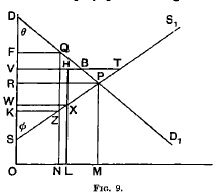 Construct a diagram (Fig. 9), such that PM represents the competitive price, and OM the competitive output; while QN represents the monopoly price, and ON the monopoly output. Let the State controlled price, measured by OV, be greater than the competitive price, but less than the monopoly price. Through V draw a horizontal line VBT cutting DD
Construct a diagram (Fig. 9), such that PM represents the competitive price, and OM the competitive output; while QN represents the monopoly price, and ON the monopoly output. Let the State controlled price, measured by OV, be greater than the competitive price, but less than the monopoly price. Through V draw a horizontal line VBT cutting DD
1 in B and SS
1 in T. It is easily shown that the monopoly output ON is one-half of the competitive output OM, and that the output, which it will pay the monopolist to produce when the price is fixed at OV, will be measured by one-half of the line VT, drawn horizontally through V to cut SS
1 in T, or by the line VB, according as the one or the other of these lengths is smaller. But, since OV is greater than PM, it is obvious that VT is greater than OM. Consequently one-half of VT is greater than one-half of OM. This proves that the output at the controlled price is greater than the monopoly output; and, since VB must be less than RP, it is necessarily less than the competitive output. That is, it lies somewhere between the two.
§ 25. An extension of the foregoing argument shows that, in the conditions contemplated, when the demand and supply curves are straight lines, the level of controlled price, which will make the output larger than any other level would do, will be that which causes the intersection point of VT and DD
1, namely, the point B,
to be identical with the middle point of VT, namely, the point H. If the angle SDP be
θ and the angle DSP be φ, this output can be shown to be equal to the output proper to simple competition multiplied by the fraction

VIII
SOME PROBLEMS OF DISCRIMINATING MONOPOLY
§ 26. Consider an industry in which conditions of decreasing supply price prevail, but in which the supply curve lies wholly above the demand curve, so that neither under simple competition nor under simple monopoly can any output take place.
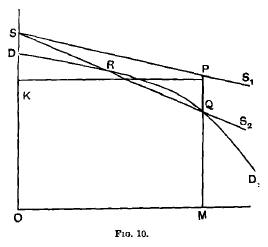 Draw the demand curve DD
Draw the demand curve DD
1 and the supply curve SS
1 as in Fig. 10. Through S draw a curve SS
2 such that, if a perpendicular be drawn from any point P on SS
1, to cut SS
2 in Q, and the figure be completed as drawn, the area SQMO is equal, for all positions of P and Q, to the rectangle KPMO. If DD
1 lies throughout below both SS
1 and SS
2, it is obvious that no output can occur under monopoly
plus discrimination of the first degree, just as none can occur under simple competition. It may happen, however, in some industries of decreasing supply price, that DD
1, while lying below SS
1 cuts SS
2. If it cuts it once it must obviously cut it a second time. Let it cut it in R and Q. Then, under conditions of simple competition, no output can occur. But under conditions of monopoly
plus discrimination of the first degree, provided that the area RQ is greater than the area DRS, an output OM will yield aggregate receipts in excess of aggregate costs, and will, therefore, be forthcoming. This result is more likely to be achieved, the more steeply the curve SS
1 slopes downward (that is to say, the more strongly the law of decreasing supply price works); because, the steeper is SS
1, the larger, when the distance OM is given, is the area PQS, and, therefore, the greater is the range of demand curves that will make the area
RQ greater than the area DRS. Given the inclination of SS
1, it is also more likely to be achieved, if the demand curve does
not slope downward steeply in its earlier stages (that is to say, if the demand is elastic till fairly low price levels have been reached).
§ 27. Monopoly
plus discrimination of the second degree, as defined on p. 279, approximates in its effects towards monopoly
plus discrimination of the first degree, as the number of different prices which it is possible for the monopolist to charge increases. This result, which is obvious in general, can be worked out exactly in a particular case. Let the output proper to discrimination of the first degree be
a, and let
n be the number of different price-groups. On the hypothesis that the demand and supply curves are straight lines, it can be shown that, when the commodity obeys the law of constant supply price, the output will be equal to
 for all values of
for all values of
n. That is to say, if one price only can be selected, the output will be ½
a: if two prices can be selected, 2/3
a, and so on. When the commodity obeys the law of decreasing supply price, the output, if
n is equal to 1, will still be equal to
 , but, if
, but, if
n is greater than 1, it will be somewhat less than this.
§ 28.
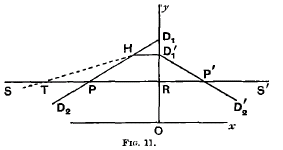 Our next problem has to do with the relative outputs under discriminating monopoly of the third degree—as defined on p. 279—and of simple monopoly respectively. Let conditions of constant supply price prevail, and let there be two markets only. Then if the curves of demand in both markets are straight lines, precise results can be obtained. Let D
Our next problem has to do with the relative outputs under discriminating monopoly of the third degree—as defined on p. 279—and of simple monopoly respectively. Let conditions of constant supply price prevail, and let there be two markets only. Then if the curves of demand in both markets are straight lines, precise results can be obtained. Let D
1D
2 and D’
1D’
2 represent the demand curves of the two markets, and let SS’ be drawn at a vertical distance OR above the base line, where OR measures the constant cost of production. Through D’
1 draw D’
1H parallel to SS’, and, through H, draw a straight line HT, such that PT is equal to RP’. Then under discriminating monopoly the output for the two markets will be respectively ½RP’ and ½RP. Under simple monopoly,
if PH is greater than HD1, the output will be ½RT. But, since
PT is equal to RP’, ½RT = ½RP’ + ½RP. Therefore, subject to the condition italicised above, the outputs under simple monopoly and under discriminating monopoly will be the same. If PH is less than HD
1, the output under simple monopoly will,
in some conditions, be ½RP, and there will be no consumption in the less favourable market. When these conditions prevail, so that under simple monopoly nothing would be consumed in one of the two markets, the substitution of discriminating for simple monopoly increases the output; but except in these conditions the output is not changed. When the assumption of constant supply price is removed and it is allowed that increasing or decreasing supply price prevails, the results reached above are not modified, since it is only through a change in the quantity of output that increasing or decreasing supply price can be called into play.
*62 Decreasing supply price, however, opens up a possibility referred to in Part II. Chapter XVII. § 13, and analogous to that examined in § 26 above, to which the preceding discussion has no relevance. This is that, in some conditions under which neither simple monopoly nor simple competition would have led to
any output, discriminating monopoly may lead to
some output.
IX
METHODS OF INDUSTRIAL REMUNERATION
§ 29. The central argument of Part III. Chapter VIII. can be brought into clear light by means of a diagram. Let us suppose the number of workpeople employed in any industry and the length of the working day to be given. It is then possible to construct a demand curve representing the employers’ demand prices (in terms of product) for different amounts of exertion per unit time from a typical workman, and a supply curve representing the workman’s supply prices (in terms of product) for different amounts of exertion. Units of exertion are marked off along O
x, and the demand and supply prices (in terms of product) of different amounts of it along O
y.
Since every increase of exertion on the part of workpeople enables employers to finish any given job more quickly, and so to start their machinery upon some other job, the demand curve DD’ will slope upwards towards the right.
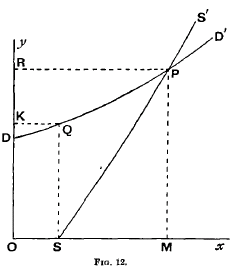 Since, if a man is at work at all, neither public opinion nor his own comfort will allow him to do absolutely nothing, the supply curve SS’ will start at a
Since, if a man is at work at all, neither public opinion nor his own comfort will allow him to do absolutely nothing, the supply curve SS’ will start at a
point some distance along O
x, and, thereafter, will slope upward somewhat steeply. Let it cut DD’ in P. Through P draw PM perpendicular to O
x, and PR perpendicular to O
y. Then, apart from possible injurious reactions on capacity that are not here considered, the amount of exertion by a typical workman, which is most advantageous to the national dividend and economic welfare, is measured by OM, and the corresponding amount of his output by the rectangle OMPR. If the wage paid to him is wholly independent of his exertions and consequent output, the amount of his exertions will approximate to OS, and his output to OSQK. An amount of exertion OM, and consequent output OMPR, can be obtained
either by the offer of a rate (in product) PM for each unit of exertion (which means each PM units of output);
or by the offer of an aggregate wage (in product)—per day or whatever the time-unit may be—equal to OMPR, conditional upon the man producing OMPR units of output, any failure to reach this standard involving the payment of a considerably lower wage.
X
THE MEANING OF EXPLOITATION
§ 30.
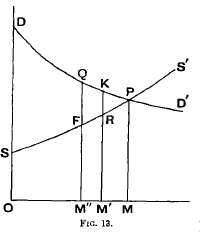 Let DD’ be the employers’ demand curve for labour and SS’ the workers’ supply curve in any district or occupation. Let PM be the wage that would result from free competition,
Let DD’ be the employers’ demand curve for labour and SS’ the workers’ supply curve in any district or occupation. Let PM be the wage that would result from free competition,
i.e. that is equal to the general rate of wages for workpeople of the grade concerned; QM” the wage most profitable to the
workpeople if they were combined; and RM’ the wage most profitable to the employers. Then the range of indeterminateness described in Part III. Chapter VI. is constituted by all rates between QM” and RM’. There is necessarily exploitation if the employers succeed in paying any wage less than PM. Let us suppose that they succeed in paying a wage RM’. It follows that, if they obtain an amount of labour represented by OM’, then the measure of
unfairness in the wage is the excess of PM over RM’, but the measure of
exploitation is the excess of KM’ over RM’. If the workpeople succeeded in establishing a wage larger than PM, the exchange index would necessarily fall on the demand curve to the left of P, say at the point Q, and we might speak of an exploitation of employers by workpeople, measured by the excess of QM” over FM”.
ante, Part II. Ch. XI.
Statistical Journal, 1914, p. 512.) This is not surprising. For, if we so far abstract from reality as to suppose that there are large numbers of people of each grade of managing ability, each industry will tend to call to its firms men of that grade whose “comparative efficiency” is greatest there. If
y be the output of the industry,
x the output of the typical firm, and F(
x,y) the total cost to that firm of its output, F will be a definite function determined by technical conditions, and for any assigned value of
y, x will be given by the equation

For my more limited purpose, however, it is not necessary to postulate that there is any representative or typical size of firms. Firms might be of all varieties of size, not concentrated about any norm. All that is required is that one firm is—or, rather, that the conditions are such as to make it possible for one firm to be—an “equilibrium firm” in the sense defined above.
post, footnote (2) to § 14.
of the industry as a whole.
and if OM in the figure constitutes a large proportion of the total output which the market is capable of absorbing at a price PM; for in those conditions the one firm may make an abnormal profit without calling new competitors into the field.
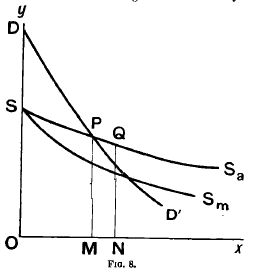 This matter is best elucidated by means of a diagram. Let DD’ be the demand curve, SS
This matter is best elucidated by means of a diagram. Let DD’ be the demand curve, SSm the curve of marginal costs, and SS
a the curve of average costs of a one-firm industry. Let OM units be produced and sold at a price PM, where P is the point of intersection between DD’ and SS
a. If the industry were to increase its output beyond OM, say to ON, the extra units would cost less than PM per unit to produce. But, nevertheless, on the assumption that all units are sold at the same price, ON units could not be sold at a less price than QN without involving the industry in a loss. Since, however, the portion of DD’ that is to the right of P necessarily lies below SS
a, it is impossible for an output ON to be sold at a price as high as QN. Hence, if the industry expands its output beyond OM, it will make a loss; and, therefore, it has no tendency to expand. When the curves SS
m and SS
a represent the circumstances of one equilibrium firm among many firms, the position is quite different. It is not now proper to draw a demand curve of the form of DD’. The price in the market would be absolutely unaltered by an expansion on the part of the equilibrium firm if its expansion were balanced by the corresponding contraction in other firms, and approximately unaltered—the equilibrium firm being supposed small relatively to the industry as a whole—if the output of other firms remained unchanged. Therefore the equilibrium firm could expand to ON and still sell at approximately the old price PM. Thus it could sell an enlarged output at more than the average cost of that output, and so make a gain. Hence, for one firm among many others, a state of things in which the supply price of the industry is equal to the average cost of the equilibrium firm, but greater than its marginal cost, is not a state of equilibrium

